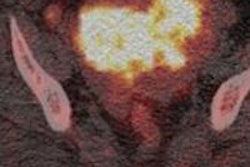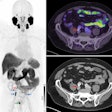A molecular imaging technique that uses F-18 fluorothymidine (FLT) may prove useful in the early assessment of treatment response for cisplatin-resistant ovarian cancer, according to a study in the October issue of the Journal of Nuclear Medicine.
The chemotherapy drug cisplatin is often effective against ovarian cancer when first given. However, tumors can become resistant to the drug and start growing again.
French researchers led by Nicolas Aide, MD, from the François Baclesse Cancer Centre and Caen University in Caen, noted that one potential way to overcome cisplatin resistance is to target the mammalian target of the rapamycin (mTOR) pathway.
The aim of the study was to evaluate the ability of F-18 FLT, a PET probe for cell proliferation, to predict early response to everolimus (an mTOR inhibitor) in a mouse model of subcutaneously transplanted human cisplatin-resistant ovarian cancer (JNM, October 2010, Vol. 51:10, pp. 1559-1564).
The study showed that F-18 FLT-PET was able to predict early response to mTOR inhibition in a cisplatin-resistant ovarian cancer in mice.
This technique should be considered for therapeutic assessment in humans and could provide a viable method to noninvasively and longitudinally monitor the efficacy of combination therapy, the researchers suggested.
Related Reading
SNM extends trials network to Europe, July 23, 2009
PET-based F-18 FLT equivocal for leukemia imaging, January 7, 2009
Copyright © 2010 AuntMinnie.com


















